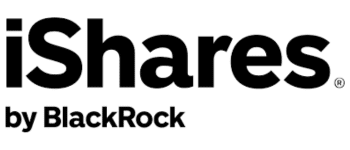These Tax-Efficient Canadian ETFs are Geared to Keep Taxable Income as Low as Possible
Key takeaways
Low-Cost and Tax-Optimized Growth – These ETFs typically have lower fees than mutual funds, making them cost-effective for long-term, tax-conscious investors.
Swap-Based ETFs for Tax Efficiency – ETFs like HXT, HXS, HXCN, and HXQ use a total return swap structure, allowing investors to defer capital gains and avoid taxable distributions.
Sector-Specific vs. Broad Market Exposure – While XIT provides direct exposure to Canada’s tech sector, the other ETFs offer diversified market exposure to Canadian, U.S., and global equities.
One ETF I like way better than the ones on this list.Tax-optimized ETFs have been growing in popularity with investors seeking Canadian ETFs. These ETFs are engineered to limit tax implications on investors, employing methods such as following indices with low turnovers and steering clear of investments that yield high levels of taxable income.
In addition, these funds can hold distributions and reinvest them back into securities rather than paying the distributions out and creating a taxable event for investors. In some instances, and this will be one of the funds I go over, they can enter agreements with financial institutions to receive the total returns of an index, which would include appreciation and dividends, as capital gains.
By doing so, investors can keep more of their investment returns and potentially earn higher overall returns in the long run.
One of the main advantages of tax-efficient ETFs is their ability to reduce taxes on dividends. When an investor sells an ETF that has appreciated in value, they are typically subject to capital gains taxes. This is unavoidable in a taxable account most of the time.
However, with the distribution, the fund manager can choose not to pay any distribution out (none of the funds on this list do), and as a result, the investor doesn’t trigger any tax events.
Tax efficiency in ETFs
Tax efficiency is absolutely key for Canadian investors when choosing an ETF. There are several ways in which an ETF can be taxed, some of which can be mitigated, while others cannot:
- Capital gains: ETFs that minimize capital gains are tax-efficient. When an ETF sells securities for a profit, it generates a capital gain. If the ETF distributes these gains to investors, they will be taxed. ETFs that minimize capital gains can reduce the tax impact on investors.
- Dividends and distributions: ETFs that distribute eligible dividends and capital gains are more tax-efficient than those that distribute interest income or foreign income. Eligible dividends and capital gains are taxed at a lower rate than interest income or foreign income. In addition, a fund can simply choose not to pay a distribution to the investor, eliminating a personal tax event.
- Return of capital (ROC): ROC distributions reduce the adjusted cost base (ACB) of an ETF. This can result in higher capital gains when the ETF is sold. ETFs that minimize ROC distributions can be more tax-efficient.
- Foreign withholding tax: ETFs that invest in foreign securities may be subject to foreign withholding tax. This tax is deducted at the source and reduces the ETF’s return. ETFs that minimize foreign withholding tax can be more tax-efficient.
Tax efficiency can have a significant impact on an investor’s after-tax returns. For example, if two ETFs have the same pre-tax returns, but one is more tax-efficient, the tax-efficient ETF will provide higher after-tax returns.
Investors should consult with a tax professional to determine the tax implications of investing in ETFs, as everyone’s situation is different, then one can determine what ETFs to buy in Canada.
However in this article I will tackle a broad list of ETFs that are at least designed to be tax efficient, and then from there you can see if they fit your portfolio. You will notice that one fund manager dominates this list, primarily because of its creation of corporate class ETFs, which are swap contracts with the banks.
What are the best tax-efficient ETFs in Canada today?
Ultra-low-cost Canadian equity exposure
Global X S&P/TSX 60 Index ETF (TSE:HXT)

HXT tracks the S&P/TSX 60 Index, which includes Canada’s 60 largest publicly traded companies. Unlike traditional ETFs, it does not pay dividends but reinvests them internally through a total return swap structure, improving tax efficiency.
Tax-efficient access to U.S. large caps
Global X S&P 500 ETF (TSE:HXS)

HXS tracks the S&P 500 but differs from traditional ETFs by using a total return swap, avoiding foreign withholding taxes on dividends. This makes it one of the most tax-efficient ways for Canadian investors to gain U.S. equity exposure.
Broadest Canadian equity market exposure
Global X S&P/TSX Capped Composite ETF (TSE:HXCN)

HXCN tracks the S&P/TSX Capped Composite Index, which covers nearly all publicly traded companies in Canada. Like HXT, it uses a swap-based structure to eliminate taxable distributions.
Tax-efficient access to U.S. tech leaders
Global X NASDAQ-100® ETF (TSE:HXQ)

HXQ tracks the NASDAQ-100 Index, which includes 100 of the largest non-financial companies listed on the NASDAQ stock exchange. It provides exposure to industry giants like Apple, Microsoft, NVIDIA, Amazon, and Tesla. Unlike traditional ETFs, HXQ uses a total return swap structure, allowing investors to avoid foreign withholding taxes on dividends while deferring capital gains tax.
Canada’s tech sector in one fund
iShares S&P/TSX Capped Info Tech ETF (TSE:XIT)

XIT provides exposure to Canada’s technology sector, primarily composed of software, IT services, and fintech companies. Its top holdings include Shopify, Constellation Software, CGI, and OpenText. Unlike HXQ, which provides global tech exposure, XIT focuses specifically on Canadian-listed tech firms.
Choosing the right ETF for your investment Goals
Investors in Canada have a wide range of options when it comes to choosing the ETF for their investment goals. Risk tolerance, management fees, expenses, and commissions can all play a role in the decision-making process.
In addition to this, different accounts like the Tax-Free Savings Account (TFSA), of which there are various ETFs that are best for TFSA, Registered Retirement Savings Plan (RRSP), and non-registered accounts have various tax implications, especially once we start looking at Real Estate Investment Trusts, REIT ETFs, or U.S. stocks for our portfolios.
One of the first things to consider is the type of equity the ETF invests in. Canadian investors may want to consider ETFs that focus on Canadian corporations for the tax-friendly Canadian dividends, while those looking for more diversification may prefer ETFs that invest in a mix of U.S. and international equities.
Another important factor to consider is the management fee. While ETFs tend to have lower management fees than mutual funds, comparing fees between different ETF options is still important.
Some ETFs may have higher management fees due to more active management or specialized investment strategies. We’ve gone over a few even on this list (XIT and HXQ).
Investors should also consider the tax implications on the distributions, even in an RRSP, of owning a Canadian-domiciled ETF that holds U.S. stocks or ETFs.
Ultimately, the right ETF for an investor will depend on their investment goals and risk tolerance. There are many different types of ETFs such as covered call ETFs, ETFs that focus on particular industries like gold ETFs, or other ETFs that offer broader diversification and exposure to several markets in all-in-one ETFs.
Those with a higher risk tolerance may prefer ETFs that invest in more volatile equities. In contrast, those with a lower risk tolerance may choose more stable options.
Finally, it’s essential for unitholders to regularly review their ETF holdings to ensure that they are still aligned with their investment goals. As the market and economic conditions change, some ETFs may become less suitable for an investor’s needs.
When choosing the right ETF, it’s critical to research, determine your risk tolerance, plan out your asset allocation, and consider all other relevant factors.
